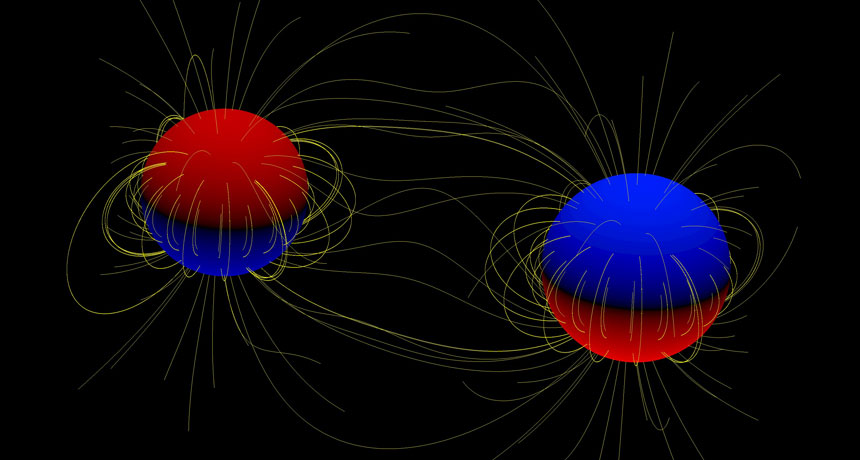Massive Black Holes May Have Spawned from Powerful Magnetic Stars

Florida Tech Researcher offers theory that the colliding massive black holes that produced gravitational waves detected by LIGO could have started life as magnetic stars.
When scientists detected gravitational waves at the Advanced Laser Interferometric Gravitational-Wave Observatory in 2015, it was one of the biggest physics discovery ever. Mathematical models provided evidence that gravitational waves were fundamental to the universe, but they had never been observed directly. This particular ripple in space-time detected by LIGO was created by the collision of two extremely massive black holes more than a billion years ago.
While many scientists pore over the waves themselves, other scientists such as Florida Tech’s Veronique Petit are interested in the nature of the black holes that collided. These black holes were not “ordinary” black holes, they were extremely large, each weighing between 29 and 36 times the mass of our sun.
In a recently published paper in the Monthly Notices of the Royal Astronomical Society, Petit and her research team propose the idea that these black holes were once massive magnetic stars. In theory, the stars’ strong magnetic fields could hold on to more gas in its death throes than ordinary massive stars, which lose a lot of their fuel through solar wind.
Here is the excerpt from Science News, which reported on Petit’s study:
“Massive stars can lose up to half their mass to their dense stellar winds,” says Petit, an astrophysicist at Florida Institute of Technology. “That leaves only enough mass to make a more modest black hole. Intense magnetic fields might redirect escaping gas back onto the star.” The result: unusually large black holes.
“Computer simulations allowed researchers to see how much mass a star could retain if it were blanketed by magnetic fields. Magnetism is an effective levee, they found. A magnetic star that starts off with 80 times as much mass as the sun, for example, ends its life about 20 suns heavier than a similarly massive one that’s not magnetic.
‘This is an interesting alternative hypothesis for how stars can end up holding onto more of their mass, so they can form such heavy black holes,’ said Vicky Kalogera, an astrophysicist at Northwestern University in Evanston, Ill. But, she cautioned, ‘the mechanism is somewhat speculative.’ Astronomers still don’t have a good handle yet on how magnetic fields change as a star evolves, particularly as the star approaches the end of its life.”
Petit acknowledged that getting conclusive evidence won’t be easy: To determine if magnetic fields are responsible for making huge black holes, scientists are face with the challenge of finding another galaxy with a massive black hole collision. It also competes with another hypothesis for the formation of very large black holes, which is that these monsters may have formed early in the universe’s history when there were fewer heavy elements to burn.
The presence of heavier elements, such as carbon, oxygen and iron, which are only available to younger stars, have stronger solar winds that propel gas used as fuel away from the star. Early stars that lacked elements heavier than helium may not have had to contend with solar winds robbing their energy, leaving them with enough mass upon their death to condense into a super massive black holes.
In the universe at large, magnetic stars are fairly rare and massive stars are even less likely to be magnetic. Observations suggest that only ten percent of massive stars have powerful magnetic fields that exceed 10,000 gauss (the sun, which isn’t particularly magnetic, has an average magnetic field close to 1 gauss).
Read the whole Science News article here.
%CODE1DISCOVERYMAGVOL13%




